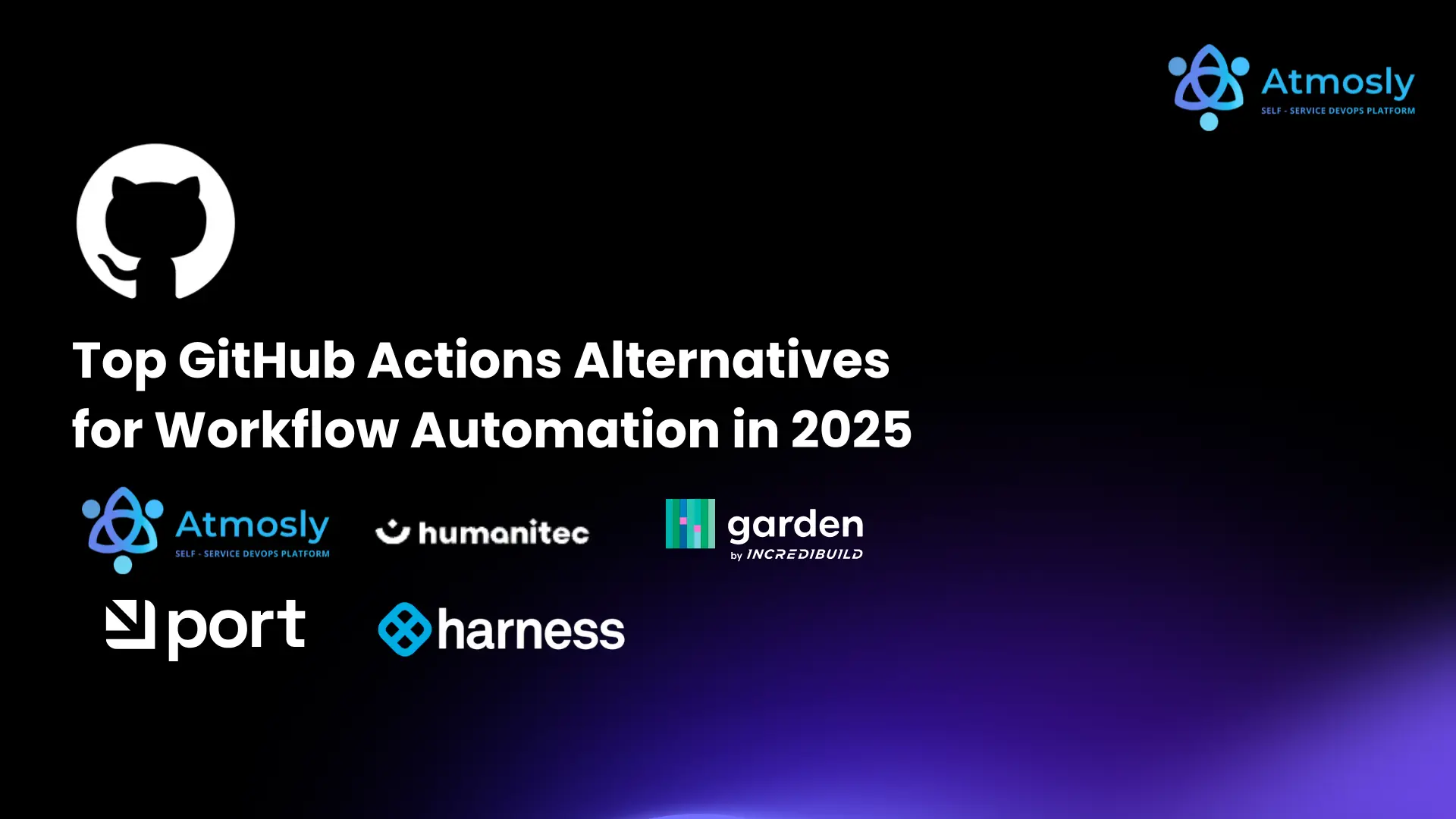Introduction
GitHub Actions has become a go-to CI/CD solution for teams already using GitHub to manage their code. Its event-driven model and community-maintained actions make it appealing for fast deployments.
But as teams scale, many discover GitHub Actions' limitations: lack of deep environment control, complex secrets handling, limited visibility into drift or rollback, and no native support for platform engineering.
If you're looking to move beyond GitHub Actions and implement a more scalable, secure, and developer-friendly automation stack this article highlights the top GitHub Actions alternatives built for 2025 and beyond.
Why Look Beyond GitHub Actions?
While GitHub Actions is great for basic automation, growing engineering teams often face challenges like:
- Manual management of environments and secrets
- YAML-heavy, hard-to-reuse pipeline logic
- No built-in GitOps or drift detection
- Difficulties in setting up developer self-service
- Lack of support for platform engineering patterns
The following tools are designed to go beyond enabling modern DevOps automation, GitOps workflows, internal developer portals, and scalable cloud-native operations.
1. Atmosly
Best for: GitOps-first CI/CD, developer self-service, and platform engineering enablement.
Atmosly is a modern DevOps automation platform that replaces GitHub Actions with reusable, Git-native workflows. It offers built-in secrets, on-demand environments, and policy-driven governance making it a robust upgrade for any fast-scaling engineering team.
Key Features:
- GitOps-native pipeline automation with rollback & audit trails
- Built-in secrets manager with access controls
- Ephemeral and persistent environments (dev, QA, staging)
- Golden path templates for reusable workflows
- Visual workflow dashboard and approval gates
Why Choose Atmosly:
- Reduce YAML overhead and increase pipeline reuse
- Built-in drift detection and secure secrets handling
- Ideal for teams building internal developer platforms (IDPs)
2. Humanitec
Best for: Enterprise teams managing complex workloads and internal platforms.
Humanitec acts as a platform orchestration layer decoupling infrastructure provisioning from app deployment. Unlike GitHub Actions, Humanitec is built for dynamic workload management and developer self-service through APIs.
Key Features:
- API-driven environment management
- Workload orchestration and dependency mapping
- Integration with CI tools and cloud infra
- Dynamic configuration and resource allocation
Why Choose Humanitec:
- Deliver platform capabilities via APIs
- Automate environments with zero manual scripting
- Ideal for large orgs managing shared infra and services
3. Port
Best for: Building internal developer portals with visual workflows.
Port lets platform teams create UI-driven self-service portals where developers can trigger workflows, request infra, and view metadata without ever touching a YAML file.
Key Features:
- Visual portal builder with GitOps triggers
- Infrastructure blueprints and metadata modeling
- Workflow automation through dashboards
- Integrated access control and audit logging
Why Choose Port:
- Offers visual UX on top of GitOps pipelines
- Centralizes access to automation without needing code edits
- Ideal for platform engineering and DevEx improvement
4. Harness
Best for: Secure, enterprise-grade CI/CD with feature flags and compliance.
Harness is a robust alternative to GitHub Actions for enterprises that need secure, policy-enforced software delivery. It provides built-in verification, audit trails, rollback, and cost governance.
Key Features:
- Blue/green and canary deployments
- Policy-as-code for compliance and approvals
- Continuous verification with health check
- Feature flag management and cloud cost control
Why Choose Harness:
- Unified platform with governance and observability
- Secure deployment workflows at scale
- Best for teams that outgrow open-source CI/CD tooling
5. Garden
Best for: Kubernetes-native teams building fast feedback loops.
Garden streamlines the inner loop of development by orchestrating tests, builds, and services across Kubernetes. Unlike GitHub Actions, which focuses on code-level automation, Garden focuses on the full dev/test pipeline.
Key Features:
- Infrastructure, tests, and services defined as code
- Dependency graph for efficient task execution
- Smart orchestration across local and remote environments
- K8s-native, ideal for microservice architectures
Why Choose Garden:
- Designed for fast, iterative development
- Local-first + cluster-native workflow automation
- Great for teams building/testing complex services on Kubernetes
Final Comparison
Tool | Ideal For |
| Atmosly | GitOps automation, environments, developer self-serve |
| Humanitec | Enterprise infra orchestration and workload management |
| Port | Internal portals with visual workflows |
| Harness | Secure CI/CD with governance and feature delivery |
| Garden | Fast Kubernetes-based testing and service orchestration |
Conclusion
GitHub Actions is a solid starting point but not always the best long-term CI/CD solution for scaling teams. As your infrastructure grows, so do your needs for:
- GitOps-native delivery
- Secure secrets management
- Environment provisioning
- Developer self-service
- Platform-level observability
Tools like Atmosly, Humanitec, Port, Harness, and Garden provide the depth and flexibility needed to evolve your automation stack without compromising control or developer velocity.
Ready to Upgrade from GitHub Actions?
Atmosly helps you go from script-heavy workflows to reusable, GitOps-native automation backed by secure environments, built-in governance, and developer-first tooling.
